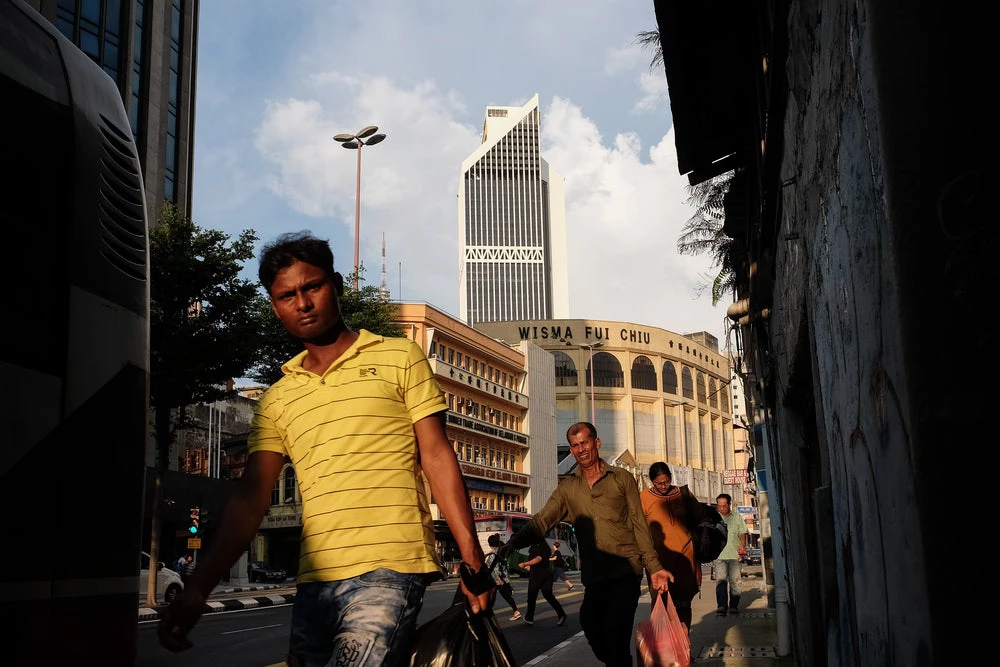 Bangladeshi migrant workers operating a grocery store in Kuala Lumpur, Malaysia. Photo:Abd. Halim Hadi/Shutterstock.com
Bangladeshi migrant workers operating a grocery store in Kuala Lumpur, Malaysia. Photo:Abd. Halim Hadi/Shutterstock.com
As international migration flows are set to increase – driven by income gaps, demographic pressures, and climate change – the question facing us today is how we can support countries to promote safe, orderly, and regular migration to maximize returns for both sending and receiving countries. At the World Bank, we are looking at where our support can have the greatest impact. Given the size and scope of the challenge, our attention has turned to the South Asia region.
South Asia is important for several reasons. First, recent years have seen poverty rates fall around the world, and rapid income per capita growth in the developing world. These successes have been driven in large part by gains in the South Asia region. Second, migration flows in the region are substantial. According to ILO estimates, of the almost 164 million migrant workers in the world, 15 percent come from South and South-East Asia, comprising over 19 million men and close to 4 million women migrant workers. The 2012-2017 period saw Bangladesh, India, Nepal, and Pakistan each sending approximately between 46-71,000 workers overseas on average annually.
This means that we need to address the challenge of migration in South Asia if we want to reduce poverty and increase growth both within the region and beyond.
The 2012-2017 period saw Bangladesh, India, Nepal, and Pakistan each sending approximately between 46-71,000 workers overseas on average annually.
Migration Brings Substantial Benefits
The potential benefits of migration in South Asia are substantial, with implications for growth, human capital, and poverty alleviation. For example, migrant workers send back substantial remittances. In South Asia, this is equivalent to between 6 to 30 percent of GDP in the region, often multiples of foreign direct investment (FDI) and official development assistance (ODA) combined. These flows boost household consumption and support macro-economic stability in countries of origin. Remittances can also play an important role in building human capital through greater spending on health, education, and more.
Temporary international labor migration plays a critical role in the jobs agenda, a key focus for the South Asia region which is still largely in the window to realize demographic dividends from its large and growing cohort of youth. Right now, South Asia faces the challenge of having to create good quality jobs to keep up with the millions of people that are projected to enter the working-age cohort every year for another generation. Despite a rapidly growing private sector in some of these economies, absorbing all these workers will remain a challenge. Overseas markets thus play an important role as a source of jobs.
In addition, it is often the migrants themselves who see the greatest improvements in their welfare. Migrating can increase their earnings – often doubling and tripling their wages. It also helps build their human capital by providing opportunity to develop new skills and enjoy greater agency and independence.
The potential benefits of migration in South Asia are substantial, with implications for growth, human capital, and poverty alleviation.
However, South Asian migrants still face myriad challenges from high costs and elevated risks to personal safety and welfare. Many of the poor in South Asia – those who could benefit the most from temporary economic migration – are unable to access overseas labor markets. The costs of international labor migration from South Asia to the most popular destinations are also among the highest in the world. The average costs of migration for migrant workers from Bangladesh, Nepal, and Pakistan are equivalent to 6-12 months of wages at the destination. High debt burdens incurred to support migration often also exacerbate the risks faced by migrants.
As the nature of global demand for workers shifts – with changes in labor market policy in current destinations and structural changes in the global economy, such as the increasing role of Industry 4.0. – these shifts may accelerate the rate of return migration and create pressures in sending countries for sustainable labor market reintegration.

Need to Improve Migrant Welfare Remains
There is strong consensus on the broad priorities – embedded in the Sustainable Development Goals and the Global Compact for Safe, Orderly, and Regular Migration (GCM) – to address the challenges and opportunities of migration globally. However, specific policies and initiatives must be tailored to the unique challenges each country and region faces.
In South Asia, policies are needed to promote better governance of migrant workers’ recruitment and their protection to ensure decent work, social protection, and portability of social security entitlements ; enhance regular migration pathways in the region; and assist countries with the reintegration of returnee labor migrants. New technologies could improve migrants’ access to information and address market failures in the current migrant-worker recruitment process – a key source of high migration costs. Public sector intermediation – such as through bilateral agreements – could reduce costs and improve safety while also serving to discipline the market more generally. Well-designed publicly administered programs like Korea’s Employment Permit System or the Bangladesh-Malaysia Government-to-Government (G2G) labor agreement can be a powerful way to reduce costs and deliver better outcomes for both sending and receiving countries.
In South Asia, policies are needed to promote better governance of migrant workers’ recruitment and their protection to ensure decent work, social protection, and portability of social security entitlements.
What Can the World Bank Do?
Addressing the migration agenda in South Asia will require cooperation from all our partners. In December, the World Bank brought together over 50 stakeholders from across the region to Bangkok for a conference titled: “Safer and More Productive Migration for South Asia: A Forum for Knowledge to Action." The gathering allowed participants from government, civil society, development organizations, and academia to share views, brainstorm specific investments and innovations, and discuss the role that the World Bank and other partners can play. Government stakeholders from Afghanistan, Bangladesh, Bhutan, Nepal, Pakistan, and the Philippines shared experiences, lessons, and future goals, development partners like the ADB and ILO offered their perspectives on how to best engage on migration and deepen collaboration with the World Bank.
A clear message to emerge from the conference was that migration is a multilateral phenomenon, and thus requires multilateral solutions. The highest impact interventions will require actions not just from sending countries, but also actions in receiving countries.
Working across countries presents a new area for development institutions, such as the World Bank, and these institutions will require time to learn and adapt. However, when it comes to thinking of the full migration life-cycle – from before a migrant decides to move, to being overseas, and finally returning – the World Bank is one of the best-positioned to support actions before and after migration. Working to make migration safer and more productive, will also require supporting the families of migrants left behind in the home countries, and helping them to best access information and services.
Migration is not a substitute for development at home, but it can be leveraged for development. Viewing migration through a development lens can suggest promising ways to deploy the World Bank Group’s knowledge, finance, and convening power to catalyze collective action to address migration at the global, regional, and national levels in partnership with development actors on the ground.


Join the Conversation